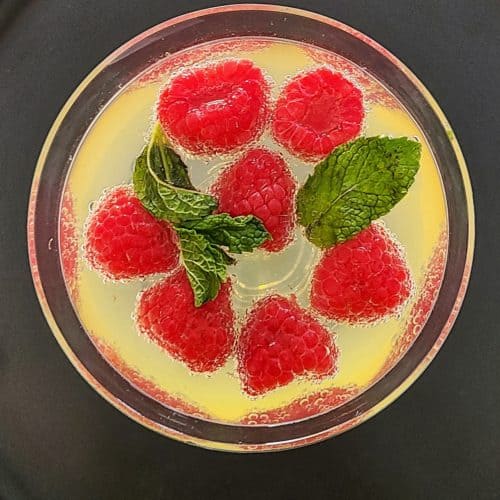I only drink champagne on two occasions: when I’m in love, and when I’m not.
Coco Chanel
Do you remember the days when popping a bottle of Champagne or Prosecco meant you were at a wedding or a New Year’s Eve party, or a Sunday brunch? It seems that those were the only requisite times for a glass of bubbly, and we didn’t venture beyond those special occasions.
Times have changed, and rules were made to be broken. I’ve got to agree with Chanel, when is it not appropriate to have a glass of chilled bubbly?! There’s hardly a drink that can make that happy and celebratory. And nowadays we all need that kind of sunshine in our lives.

So, what’s the difference between Prosecco, Champagne, and Sparkling Wine?
Generally speaking, the region in which the bubbly is made is what defines the kind of alcohol it is.
- Champagne is largely produced with Chardonnay, Pinot Noir and Pinot Meunier groups grown in the Champagne region of Northeast France.
- Prosecco is produced in the Veneto or Fruili Venezia Giulia regions of Italia and is made from glera grapes.
- Sparkling Wine is essentially a term for any other wine containing bubbles, especially those produced in the United States. Every champagne is sparkling wine, but not every sparkling wine is champagne.

Method of Production also defines the type of wine.
- Champagne & Sparkling Wine: For both varieties, the original still wine goes through a second fermentation process, creating the CO2 that produces the sparkling sensation. For Champagne, the Method Champenoise or “traditional method” is used, and fermentation is done in individual bottles vs. barrels or tanks. The aging process for Champagne is longer than other sparkling wines, enabling you to drink and enjoy a vintage bottle years after production.
- For Prosecco, the “tank method” is used for the second fermentation in stainless steel tanks, rather than individual bottles. As a result, Prosecco has less contact with the yeast during fermentation, and so it is meant to be drank young, or soon after bottling. This production method is a lot easier on your wallet, too!

Food Pairings with Champagne & Prosecco
- Champagne pairs amazingly well with your raw bar, i.e., oysters, shrimp crab cakes, etc. And you’ll enjoy a glass of it with zingier bites like potato chips, seared scallops and some Asian foods.
- Prosecco aligns better with charcuterie and savory meats and desserts, like a rich, creamy cheesecake. (And my blood orange sorbet has a few dabbles of Prosecco in the recipe to add to the vibrancy of the taste.)

Now that we are armed with some tactical knowledge, it’s time to “Pop. Fizz. Clink.” with some Prosecco in honor of National Prosecco Day on August 13. Let’s pop some bottles, get bubbly and feel some sparkling love!




Limoncello Raspberry Prosecco
Equipment
- Champagne Flute or white wine glass
Ingredients
- 1.5 cups Prosecco well chilled
- 3/4 cup Limoncello well chilled
- Raspberries frozen
- Fresh Mint
Instructions
- In a small pitcher, combine the Prosecco & Limoncello together. Serve over frozen raspberries and garnish with mint sprigs.
Elderflower Strawberry Prosecco Cocktail
Equipment
- Champagne or coupe glass
Ingredients
- 3 parts Prosecco well chilled
- 1 part Elderflower Liqueur
- 1 part Club Soda well chilled
- Frozen sliced strawberries
- Mint Sprig for garnish
Instructions
- Combine Prosecco and Elderflower liqueur in coupe glass. Gently stir quickly. Add a spash of club soda. Garnish with frozen strawberry slices and mint sprig.

Watermelon Prosecco Cocktail
Ingredients
- 1/4 cup mint leaves
- 4 teaspoons agave nectar or simple syrup
- 4 cups cubed watermelon well chilled
- Prosecco well chilled
Instructions
- Muddle mint and simple syrup together. Add to a blender.
- In blender with the mint and simple syrup, add cubed watermelon. Blend together.
- Keep in freezer or refrigerator until well chilled, but not frozen.
- Fill glass 1/2 with watermelon mixture. Top with Prosecco. Garnish with watermelon wedge.









RAMONA R MIDEIROS
August 13, 2020Very tempting.
Stacy Kopper
August 16, 2020You had us at Prosecco!